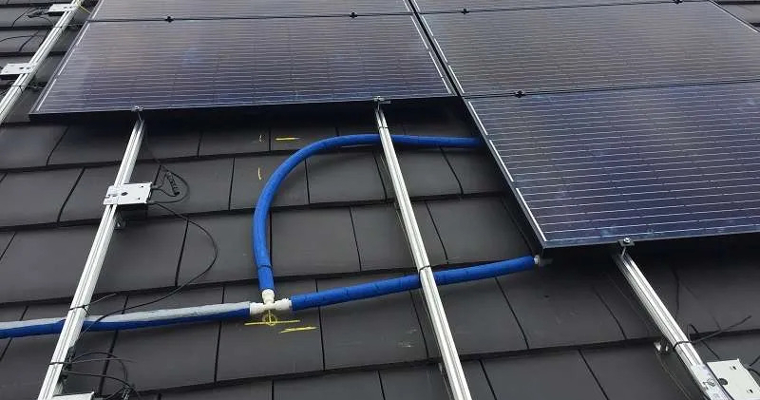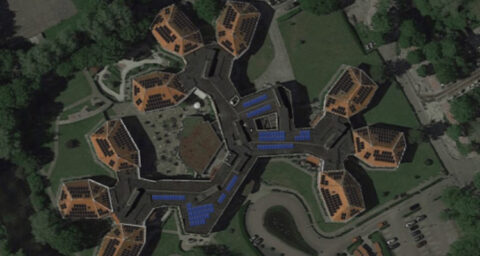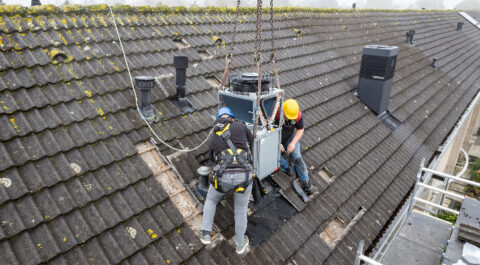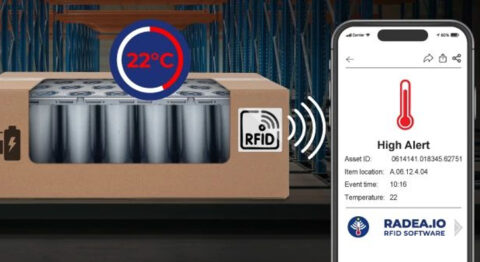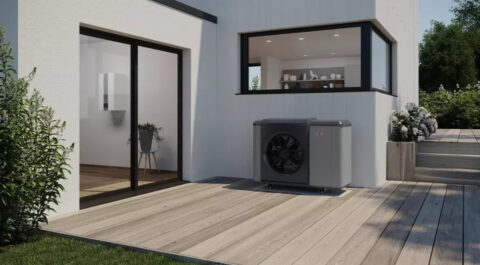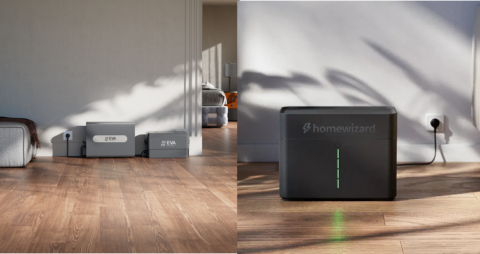A PVT panel is also called a heat pump panel or a thermal solar panel. Compared to regular PV panels, a PVT panel lets you kill two birds with one stone. Because with it, you generate both electricity and heat through the same panel. Again, that's efficient, because those solar panels are there anyway. How about that exactly?
PVT heat pump panels look the same on the roof as regular PV panels. In fact, the front side consists of a "regular" solar panel (PV) that converts sunlight into electricity. The big difference is that on the back there is a thermal exchanger (T). Through a pipe system containing a coolant such as a mixture of water and glycol, it is possible to extract heat from sunlight, daylight and the outside air.
Heat extraction around the clock
This means that heat can be produced virtually all year round. In every season and also 24 hours a day. Indeed, also at night, in cloudy weather and even when it is freezing outside, depending on the installation for example down to an outside temperature of -10 °C.
During the summer months, the hot tap water is almost completely free, while if the outside temperature is too low, the heat pump can possibly step in via electric supplementary heating to achieve the desired water temperature. Power generation, on the other hand, also occurs with PVT panels only during the day, of course, and especially under sunny conditions.
Placement of these panels can be either on a flat roof or a sloped roof. The optimal orientation is particularly important for electricity generation by the PV part. As far as heat generation with the T section is concerned, this does not listen so closely, because in the absence of sunlight or daylight heat is still extracted from the outside air.
Heat pump
By coupling the PVT panels with a water-to-water heat pump, the absorbed heat can be converted into usable heat for both heating and domestic hot water. This PVT heat pump requires only an indoor unit, as the PVT panels are the source. The combination of panels, heat pump, inverter and any boiler is also called a PVT system.
As an installer, you usually supply and install the complete PVT system, so that all components can be optimally adjusted and matched. PVT panels are a lot heavier than PV panels, so the roof structure must be able to withstand this. Also, the installation time is a bit longer.
Hybrid or all-electric
A hybrid PVT system is especially suitable for existing buildings, because there the insulation is often inadequate and high-temperature radiators are still present, for example. An all-electric PVT system is mainly intended for new buildings, because of the good insulation and the absence of gas connection and boiler. Although, of course, it can also be perfectly applied to existing buildings, provided the necessary preparations have been made. Starting hybrid and switching to all-electric later is another option. Expanding with additional PVT panels for extra power is also always an option.
Combining panels
If necessary, regular PV panels can be added in addition to PVT panels to fully cover daily electricity needs. This may be of interest to end users because the purchase cost of regular PV panels is lower. In that case, the PVT panels can be fully sized for the expected hot water demand, while the combination of PVT panels with PV panels provides for the electricity demand.
The PVT panels on the roof not only provide heat, but also act as an energy source for, first of all, the PVT heat pump. Since the electricity output of the panels is usually higher than the energy consumption of the heat pump, it often runs completely for free, leaving electricity that can be used for other purposes afterwards.
Four-in-one
Ideally, PVT panels are completely silent and use the same surface area where PV panels would otherwise be anyway. The lack of moving parts results in a longer lifespan that can exceed 25 years. Another advantage is that there is no need for an outdoor heat pump unit, which is not always possible or desirable because of noise or appearance.
The dissipation of heat also makes the solar panels work more efficiently on hot days. A PVT system is typically low-maintenance. The annual service call can often be dropped, especially if maintenance is scheduled based on monitoring.
In summer, a PVT system also allows cooling by reversing the operation. So actually the end user catches not two but four birds with one stone. Heat for heating, heat for tap water, cooling and electricity from one and the same surface.
